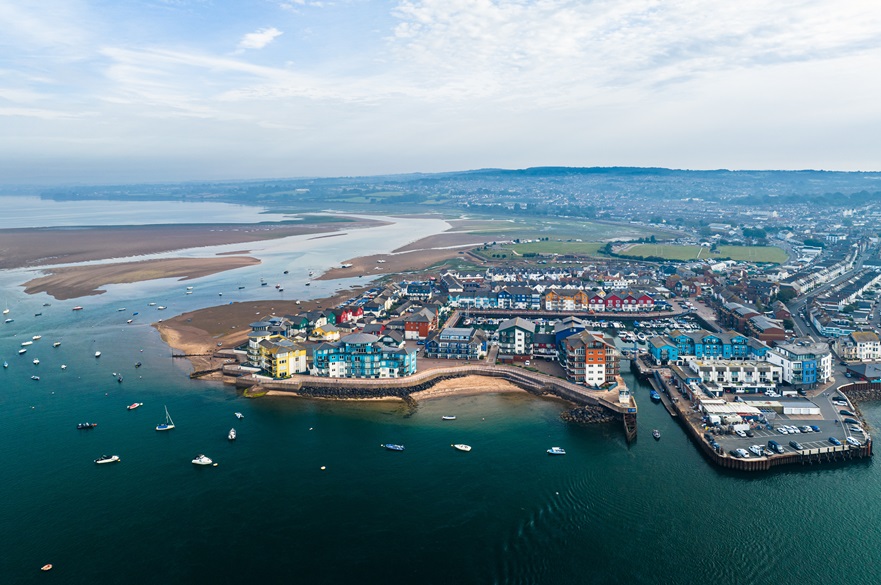Crucial habitats in many UK estuaries are at high risk of being squeezed out, potentially disappearing entirely in the face of climate change and human development, a new study has revealed.

Environmental scientists at Nottingham Trent University have identified exactly where coastal waters meet freshwater rivers, unlocking insights into one of the most overlooked and at-risk aquatic habitats.
Using more than 76,000 salinity measurements, the team has identified and mapped tidal freshwater and low salinity zones at the top of all 85 estuaries across mainland England and Wales.
Estuaries are bodies of water, found on the coast where the river meets the sea, with water becoming less salty as it moves inland from the estuary mouth to the river.
These transitional waters serve as essential habitats and corridors, transporting nutrients, energy and species between land and sea and are considered to be one of the most productive ecosystems on the planet.
According to the researchers, however, many are now in serious trouble due to climate change and human development.
The study revealed that nearly 70% of estuaries in England and Wales are blocked by man-made barriers, such as weirs or sluices, at their tidal limits – the point where the estuary meets the river.
Nineteen estuaries identified as being at ‘high risk’
These barriers – combined with rising sea levels and dwindling summer river flows – are slowly squeezing the important tidal freshwater and low salinity zones at the top of the estuaries from both ends.
As part of the study, 19 estuaries were identified as being at ‘high risk’ from this phenomenon – which the researchers have termed ‘estuarine squeeze’.
Worryingly, the researchers argue, these 19 estuaries hold nearly two-thirds of all the tidal freshwater and low salinity waters in England and Wales.
Estuaries in southern England such as the Medway, Exe and Ouse were most at risk of their tidal freshwater and low salinity zones being lost, the study revealed.
Historically, tidal freshwater marshes – lush, flood tolerant wetlands – lined the top of many of the UK’s estuaries, providing crucial habitats for birds, fish and other wildlife, but centuries of drainage for agriculture and development have all but erased them.
Opportunity to recreate freshwater marshes
The researchers suggest that this issue presents a unique opportunity to recreate these marshes in the right estuaries – helping to combat estuarine squeeze while also helping to improve water quality and build resilience against climate change.
In recent years UK sea levels have risen by 3-5.2mm per year and the UK coastline is projected to experience a relative sea level rise of up to 1.15m by 2100.
Estuaries are home to many different plants and animals, including some which are found nowhere else. They are a breeding place for a range of important species, act as a passage for migrating species which are under threat and support large numbers of wading birds.
They also store carbon, offer protection from storms and help improve water quality by filtering nutrients, contaminants and sediment from the land before they enter the sea.
Despite their importance, very little was known about the distribution of tidal freshwater and low salinity zones at the very top of estuaries, or the extent to which were constrained by man-made barriers.
“Tidal freshwater and low salinity zones at the top of our estuaries are crucial.” Said researcher Dr Sally Little, an estuarine ecologist in Nottingham Trent University’s School of Animal, Rural and Environmental Sciences.
She said: “They are home to many different plants and animals, are productive, help store carbon, cycle nutrients and improve water quality. They are also critical habitat and corridors for migratory fish moving between river and sea.
“Many of these zones are being squeezed due to climate change and development, and we now risk losing some of them completely.
“Our study underscores the urgent need for monitoring and management, but it also presents a unique opportunity to compensate for their loss through the creation of tidal freshwater marshes.
“Recreating tidal freshwater marshes would not only combat estuarine squeeze, but also help meet biodiversity goals, improve water quality, and build resilience against climate change.”
Many of these zones are being squeezed due to climate change and development, and we now risk losing some of them completely
Dr Sally Little
